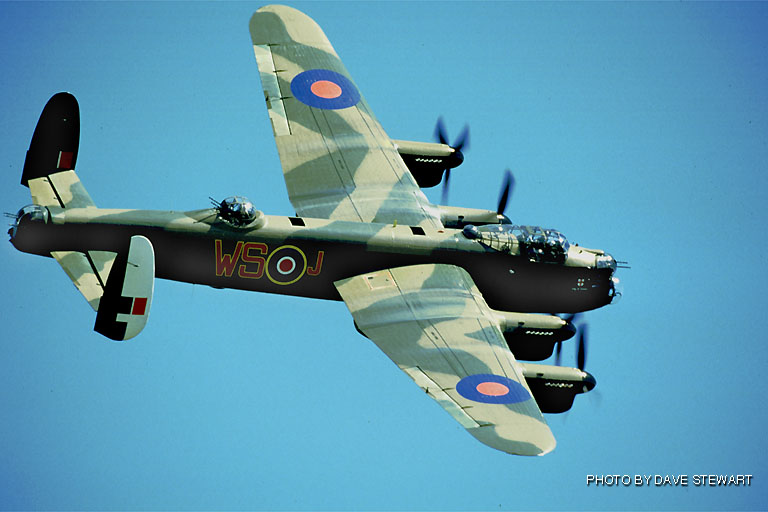|

|
Avro's entry into the heavy bomber category was the last, and best, English heavy bomber of WWII. They flew more missions, and dropped a greater tonnage of bombs than all of the other English heavy bombers combined. The origins of the Lancaster came from the development of the Avro Manchester bomber powered by two Rolls-Royce Vulture engines. It wasn't long after the Manchesters made it into service in 1940 that it was realized the complex and under-powered Vulture engine would not suffice. Roy Chadwick, the designer, replaced the two Vulture engines with four Merlin engines and tested the aircraft. With these modifications the Lancaster was born, with superb handling characteristics, relatively high speed and the capability of hauling a heavy load over a long distance. The first Lancaster Mk.I took to the air in October 1941. Other than the engines it differed from the Manchester in the adoption of a mid-upper and belly turrets. Soon the belly turrets were removed as they were at first useless for night flying. A high production schedule of Lancasters soon meant that Merlin engines were in short supply. The Lancaster Mk.I was fitted with the Bristol Hercules radial engine and renamed the Lancaster Mk.II After a long testing program it went into operational service in March 1943. The Mk.II possessed good overall flying characteristics, but it never equaled the Merlin-powered model. The arrival of the American-built Merlin engines doomed the Lancaster II after a production run of 301 aircraft. The Lancasters continued flying in service well into the 1950's with England, Canada, and Australia. A total of 7,366 Lancasters of all Marks were built.
|